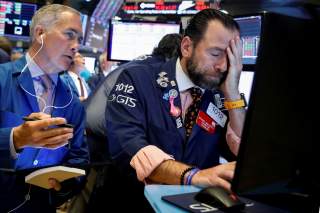This Is Why America's Economy Is Struggling with Productivity
What can be done to fix it?
Key point: Ending the trade war would help resolve America’s slow-down.
The American economy hasn’t generated decent productivity growth since 2005 (not counting the Financial Crisis-skewed years of 2009 and 2010). Indeed, if you’re going to talk about how American capitalism is “broken” or dysfunctional, you should really lead with productivity rather than the “problem” of having too many super-entrepreneur billionaires. If living standards are going to rise anywhere near as fast in the future as in the past, greater innovation-driven productivity growth will be indispensable.
So it was really encouraging to see sharply faster productivity growth in the first half of 2019, 3.5 percent annualized in Q1 and 2.5 percent in Q2. Also encouraging: multifactor productivity — the part of productivity growth accounted for by technological progress rather than better-trained workers or more buildings and software — rose by 1.0 percent in 2018, the strongest gain since the current expansion began in 2010.
Now even taking into account the volatility of productivity numbers, today’s Q3 report was a bit of a downer, declining 0.3 percent and reducing the advance over the past year to 1.4 percent. It was the first drop in four years. As The Wall Street Journal points out, that performance is in keeping “with the tepid pace in the 15 years since 2004. In the 15 years prior to that, productivity growth averaged 2.5%.” JPMorgan see the underlying trend in productivity as “soft.”
And this analysis from Capital Economics:
The 0.3% annualised decline in non-farm productivity in the third quarter left the annual growth rate at 1.4%, still slightly above the previous five-year average, but it illustrates that the acceleration in productivity growth that began last year is already fading. That isn’t a huge surprise given the recent weakness of business investment, with declines in both the second and third quarters meaning that the earlier wave of capital deepening has now gone into reverse. Weak investment can in turn partly be blamed on trade uncertainty, in which case we could see a rebound if a deal with China is eventually agreed. But it also reflects the fact that weaker demand is contributing to the re-emergence of spare capacity, reducing the need for firms to invest.
Now 1.4 percent productivity growth ain’t nothing. But when combined with slight overall labor force growth, you’re talking about a Two Percent Economy, in terms of overall economic growth. What is to be done? Ending the trade war would be a good start. Beyond that, how about the best economic policies for innovation, as ranked by economists:
This first appeared in 2019 on the AEI Ideas blog here.
Image: Reuters.

